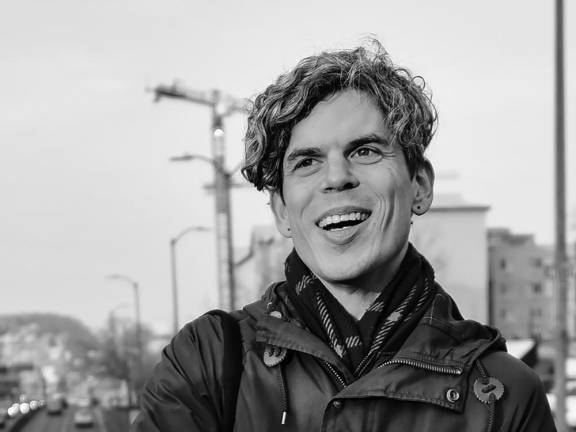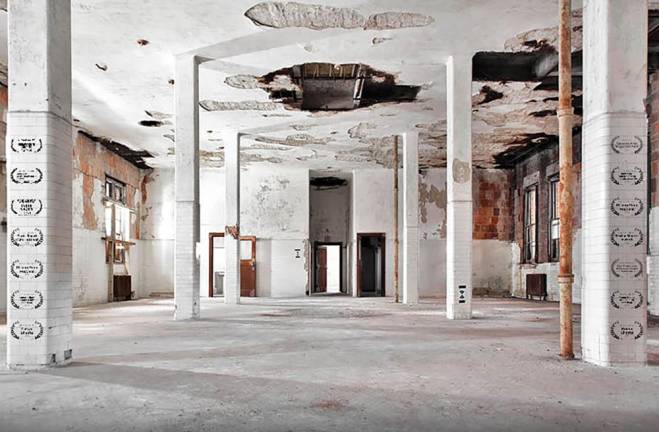Finding the Magic in New York City’s ‘Unforgotten’ Spaces
Artist Aaron Asis, creator of Unforgotten Films, says his mission is to “use art as an excuse to appreciate the underappreciated and to showcase the hidden beauty that already exists in the world”


As a youngster growing up in Flushing, Queens, Aaron Asis was always a “curious explorer.” In his free time, he would visit places like the then-abandoned Highline, usually alone. “And it was amazing to have the energy of the city below you, but not really be competing with anybody on the Highline itself,” he recalled. That fascination with underappreciated places in the city led him to want to share what he learned about them with others and eventually shaped his future career.
“Every time I think back on why I do things or what it is I’m chasing, it’s kind of that early feeling, the magic of being in a place that is not really designed for you to be on, but has a power all its own, and just letting people know that,” Asis said. “Especially in a city like New York, there’s so much magic that’s beyond what you’re actually supposed to be paying attention to and that’s what makes it so special.”
The now-Brooklyn resident, who graduated with a fine arts degree from Queens College, started in the ‘90s by taking photographs of the places that fascinated him, but quickly realized video could tell their stories more completely. In 2017, he started Unforgotten Films, a documentary mini-series that chronicles “icons around the city that seem pretty obvious, but are places that most people don’t have access to.”
His inspiration for the project came after he worked on a large-scale installation in Washington Square Park celebrating the 100th anniversary of when French conceptual artist Marcel Duchamp scaled its Arch. Although it ultimately never came to fruition, Asis used that as motivation, and has since made films on subjects such as Ellis Island, Hart Island, off the coast of City Island in the Bronx, and Fort Totten Water Battery and New York State Pavilion, both in Queens. “The New York State Pavilion’s been closed for decades, Hart Island has been inaccessible for decades, parts of Ellis Island have been inaccessible for decades,” he said. “And if we can’t bring you inside, then we’ll take the camera in and bring it to you that way.”
Your fascination with underappreciated places began as a kid growing up in Queens, exploring the Highline.
As a kid, I was always a very curious explorer. New York is one of the best cities in the world to walk around and there’s always different things going on. It’s a city without a lot of space and it’s a city where it’s hard to find a place that you can call your own. So when I was a kid, and I didn’t even know it was going to turn into anything, I found the Highline and I used to go up there, mostly by myself, but sometimes with some friends, just to walk and feel like you were alone. It just was one of those early moments where I started to think about the relationship you can have with parts of the city that maybe aren’t designed for you to be in the way you are told you’re supposed to be in them.
Where did you study?
I bounced around in the CUNY system, meaning I couldn’t quite find my spot, so I went to City College, Queens College. And I ended up graduating with a fine arts degree from Queens College and that was supporting this desire to explore and not really knowing where it would take me. I ended up going out West and went to grad school for architecture of all things and it taught me something really important about putting pieces together and connecting dots. I’m not an architect, but I think it helped me think about taking the things that you’re interested in and capturing the spirit of them and what makes them special and giving them a vehicle to go out into the world. My first step into the art world was with photo shows and I very quickly realized that they were great, but they were just showing photos and it wasn’t really the energy or spirit that I was interested in sharing. So I very quickly jumped ship from the photo game and went into things that were more video, and my real passion, which is doing installations that invite people into the spaces.
Tell us about the Unforgotten series. How do you choose your subjects?
The subjects are all places that you might not have ever heard of before, or if you have heard of it or seen it, you haven’t really had access to it before. I was working on a project in Washington Square Park, and 2017 was the 100th anniversary of an event where Marcel Duchamp scaled the Arch, went to the top of it, kind of took it over for an evening and declared it the Free and Independent Republic of Washington Square. And it’s not really one of Duchamp’s major celebrations and certainly not something that’s super documented. And I was trying to work with the city to do a large-scale installation on the Arch that would celebrate that event. And it ultimately never came together and I ended up using that as motivation to start this video project.
It became really important for this film project to have multiple voices and we needed to have people who represented the city, who represented a nonprofit group, the arts, there’s a very deliberate formula of how and why we choose the interviewees. Because we want to show that they all have different perspectives, and even though they feel like they’re 1,000 miles apart sometimes, they actually do care about the same things, it’s just hard to move in the same direction sometimes.
Through your research, what are some interesting facts you’ve learned about the places you’ve documented?
Pick one and I can talk to you for an hour and a half about it. Ellis Island is probably the most remarkable and inspiring one that I think I’ve worked on because everybody’s heard of it and it’s one of the most significant icons in our city and in our country and it speaks to what makes New York City so special. But the story behind Ellis Island in its most basic form is just mind blowing to me because it comes in 1892 and operates as an immigration station for about 30 years until 1924, then it shifts into more of a detention-oriented thing until 1954 and then it’s closed. Unforgotten and the types of projects that I’m really interested in are [about] how do these spaces disappear? And Ellis was disappeared for 30 years until the early 1980s and was primed to be torn down multiple times. Can you imagine New York City or this country without Ellis Island?
To learn more, visit www.aaronasis.com